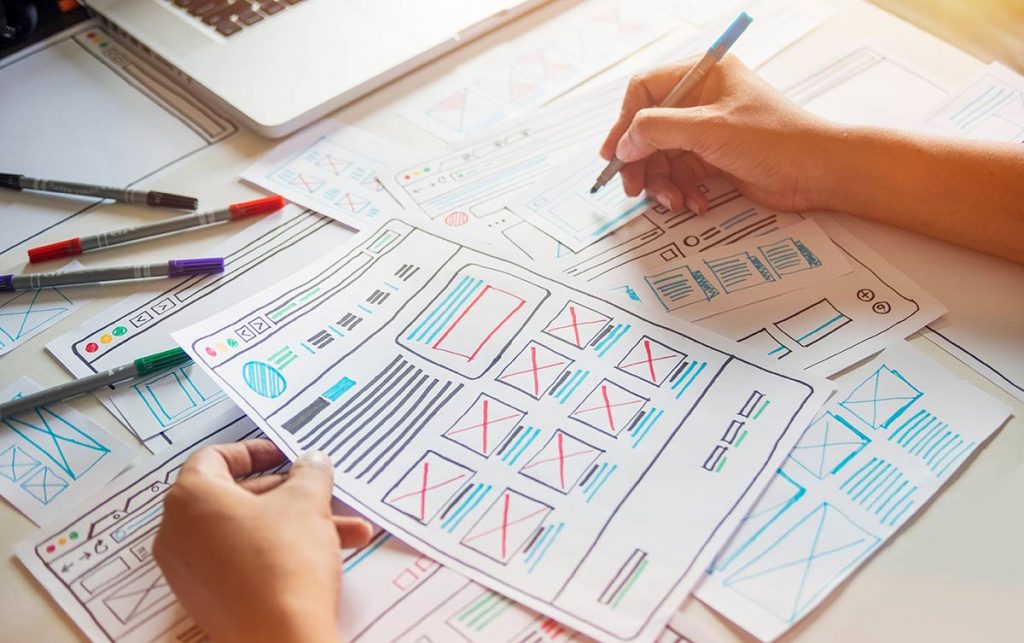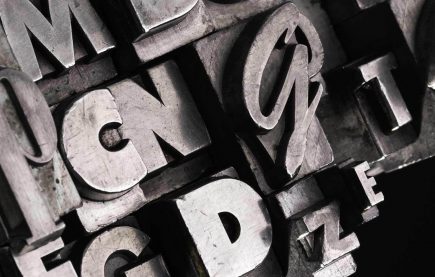
Which Software is Essential for Web Design?
Web design is a complex process, and mastering it to a professional standard takes years. Each stage of the custom web design process—from research and strategy through to planning and the final design phase—requires the use of specific tools.
But you don’t have to be a professional to utilize design tools and take part in the web design process. Even if you’ve never attempted a design project before, there are numerous points of entry to help you get started.
In this article, we’ve outlined some of the best web design software tools and resources for designers at all levels. All of these are tools that we actually use to create successful projects for our clients.
We hope that this list will be helpful to you whether you’re a client, a marketer, a new web designer, or an experienced designer looking to upskill and add some new systems to your toolkit.
Low Level Software
We define “low level software” as the easiest and simplest tools to start with. Even if you’re in a completely different industry, you may be familiar with many of these. “Low level” does not mean “low quality”. It simply means that the learning curve is less steep and the barrier to entry is lower.
Paper & Pencil

“But that’s not software!” we hear you cry. But even the most experienced professional web designers will turn to the trusty paper and pencil, which allows them to work fast and make changes quickly without the constrictions imposed by limited software features. With a pencil and paper, you won’t need to worry about drawing out an entire website interface. Instead, you can focus on one element at a time as needed, whether that’s a header, a landing page form, or where a button should go on your product page.
You don’t need to be able to draw well, either. The point isn’t to create a work of art, but to get your ideas out of your head. It’s a good idea to use shortcuts, particularly in the wireframing phase of a project. For example, a box with an X in it can represent an image and horizontal lines can represent text.
Spreadsheets
Whether you use Google Sheets, Excel, or Apple Numbers, knowing your way around a spreadsheet is essential in custom web design. You’ll use them throughout your design career.
We particularly make use of spreadsheets in the Sitemap research stage of a project. They are an ideal way to lay out a website’s navigation structure clearly and understand how large a website needs to be.
Another important use for spreadsheets in custom web design is in structuring the type of content needed for the site. You can list out all the pages and locations where content will be placed, along with what type of content is needed for each area. You can then see how much content is needed and create a plan to get it.
PowerPoint & Keynote
Designers might cringe at these two names, but stick with us. PowerPoint and Keynote are powerful tools for communicating your ideas.
As a designer, you can include sample designs, notes, and key strategy points into an easily digestible slide format. This allows for easier meetings and discussions, helping you to gather feedback at each stage and ensure the project is moving in the right direction.
In the hands of non-designers, slideshow tools are an ideal way to create a simple layout with text, images, and color schemes. The designer can then use this to understand their vision and bring it to life.
While PowerPoint is the most well-known slideshow tool, we actually prefer Keynote. This is because we find its interface more user-friendly and faster to work with. But they are both great tools and you must decide which works for you.
Mid Level Software
The software solutions in this category are a step up in terms of difficulty and learning curve. These web design tools are powerful, but still no match for a highly skilled designer using the most advanced software suites. With that said, they are still useful at every stage of the process, from discussing ideas to maintaining a website after launch.
Moqups
There are numerous wireframing and user interface (UI) design tools on the market. We like Moqups because it is easier to learn and master than many of its competitors, while still offering a powerful suite of features.
We recommend employing Moqups for low- to mid-fidelity wireframes and diagrams. It allows you to lay out page elements or create a sample user journey clearly and cleanly. If you’re short on time, the included templates are a useful jumping off point.
Using a tool like Moqups allows you to create a top-level framework and get the main elements of your design in place before delving deeper into the design process.
Despite its great wireframing and diagramming capabilities, Moqups’ UI design features aren’t a match for some of the bigger names in the industry such as Figma, Sketch, and Adobe XD, the latter of which we’ll discuss in the next section.
Photoshop

Virtually everyone has heard of Photoshop. It’s hugely powerful and is a staple for professional web designers as well as those in other industries that utilize imagery in their work. In this context, we are specifically recommending Photoshop for its more basic features. Photoshop as a whole is a large and complex piece of software with extensive features, many of which the typical user will not need.
Photoshop allows you to crop, edit, and optimize images. It also allows you to reduce pixel size and compress an image’s file size so that it loads faster, mitigating one of the main offenders in slowing down website page speeds.
There’s no getting away from it: how your finished website looks matters. You can improve your site’s aesthetic appeal using basic image editing features such as hue, saturation, curve adjustments, and more. There are numerous free tutorials online.
A word of caution, though. It’s easy to over-edit an image. If you need anything more than minor edits, we recommend leaving it to the professionals.
Visual Studio Code
This free application from Microsoft is a great way for designers and non-designers alike to take notes, format text, and organise content. It was created for web developers and has great coding capabilities, but many of its basic features are also ideal for non-designers.
Unlike tools like Google Docs and Microsoft Word, it does not add behind-the-scenes formatting to your text (which creates a problem when copied and pasted into other programs). Instead, VSC allows you to strip all formatting from content and paste it consistently into other programs as needed.
VSC also offers numerous useful shortcuts. For example, you can create multiple entries on different lines at the same time, select multiple rows of text independently, and make use of its advanced find-and-replace capability. All of this saves you time. To get the most out of VSC, we recommend learning Markdown, a simple coding language that helps with formatting text documents. We use Markdown extensively to create plans, presentations, and website content for our clients.
High Level Software

High level software takes time to master and is best suited for experienced designers. We recommend you take the time to learn the basics first or, if you’re not sure, leave these high level tools to the professionals.
While there are other options that can fulfil many of the same functions, we recommend that all professional designers get comfortable with these programs. Here at Lform Design, we use all of them on a daily basis.
Adobe XD
Prototyping tools are all the range but, when it comes to custom web design, wireframing, and stylescape, Adobe XD is our go-to.
We use Adobe XD to create concept work for clients during the research phase. We also utilize its wireframing and prototyping capabilities to format page content and make revisions more quickly. At the UI design phase, we can apply design styles to the wireframes, cutting down the time it would take to recreate individual elements.
Adobe XD’s prototyping tools allow clients to view a wireframe or UI design and visualise the user flow through their website. They can even leave comments on specific design elements to indicate what needs to be adjusted, moved, or changed.
XD is updated regularly and recent, powerful additions include auto animations, page transitions, and custom layout tools. Naturally, it also works well with other Adobe tools, allowing us to build libraries of colors, styles, and assets within the same suite.
Adobe Illustrator
Another one from the Adobe family, Illustrator still beats its main competitor, Sketch, when it comes to creating graphics, icons, and artwork for custom web design. We also recommend Illustrator as our tool of choice for two other main reasons. First, most vendors, designers, and other professionals in our industry have it, which makes sending files fast and easy. Secondly, as an Adobe program, it integrates seamlessly with other Adobe tools in our repertoire, such as Adobe XD and Photoshop.
At all stages of the design process, from concept to production, we use Illustrator in conjunction with XD to create UI elements quickly. It is also useful for creating and editing complex vector graphics and illustrations when required.
Illustrator is complex and takes some time to learn. But we believe it’s well worth taking the time to get to grips with it. You can also make use of various plugins to streamline some of its clunkier features.
Suitcase Fusion
Installing all the fonts you might need directly into your operating system will slow your computer down and make it difficult to transfer fonts to vendors or clients as needed. Suitcase Fusion is a fantastic way to keep all your fonts in one well-organised place.
We use Suitcase Fusion to activate fonts as we need them. It also allows us to gather the fonts we need, zip them, and email them to third parties quickly and easily.
The only real downside of Suitcase Fusion is that you still need to be careful and very organised when using it. Otherwise, you’ll end up with a jumbled mess. We recommend categorizing your fonts into sets (such as serif, sans serif, and display). If you prefer, you can organize fonts by client. This is useful when your clients have specific brand guidelines that must be closely followed.
Wrapping Up
If you ask 100 designers about their most essential web design software tools, you’ll get 100 different answers. Every designer works differently and has their own tastes, skills, and preferences.
In this list, we have outlined some of the main web design tools that Lform Design uses and vouches for. Hopefully, no matter where you are in your web design journey, this will help you find the perfect tool to help you create a successful project!


